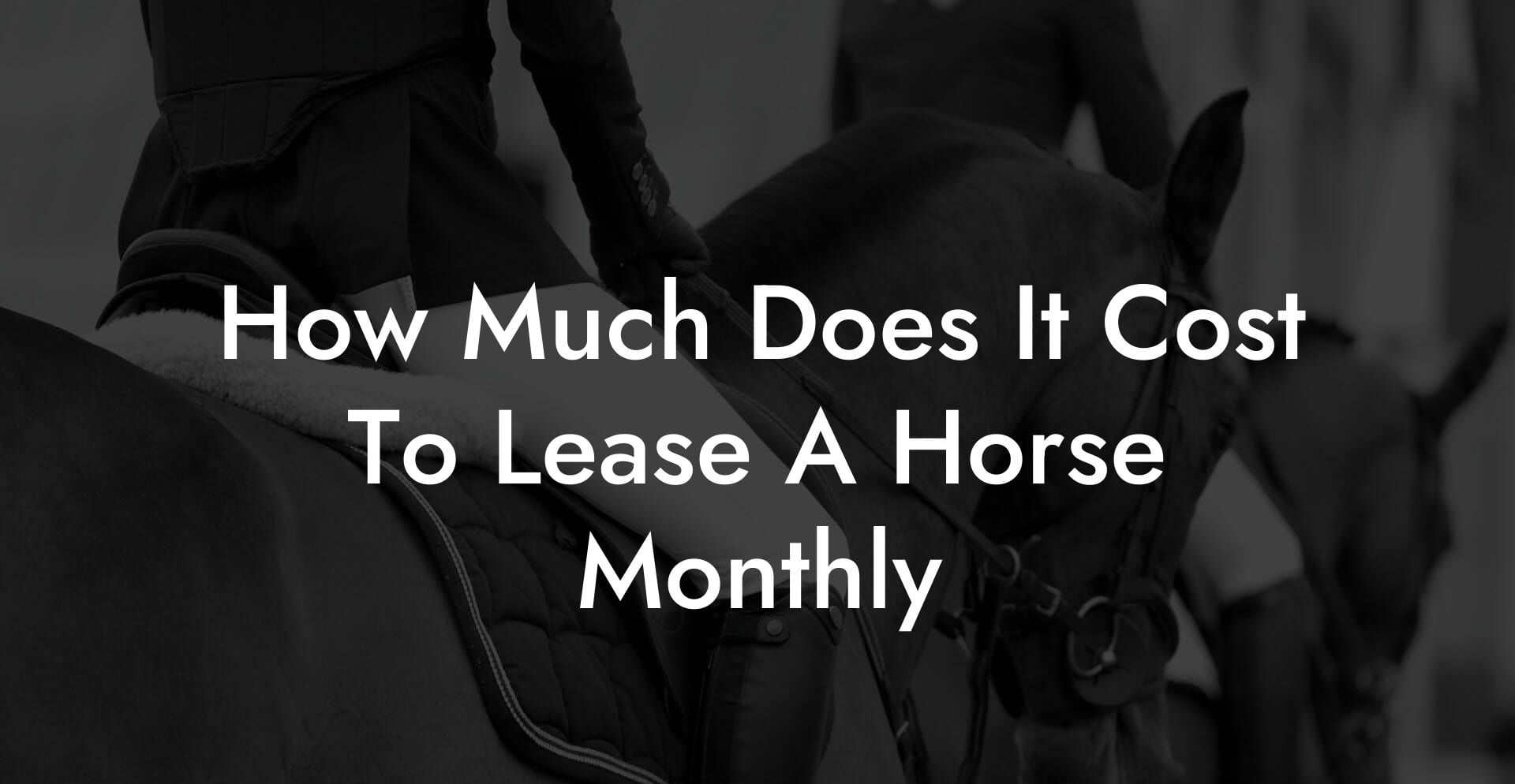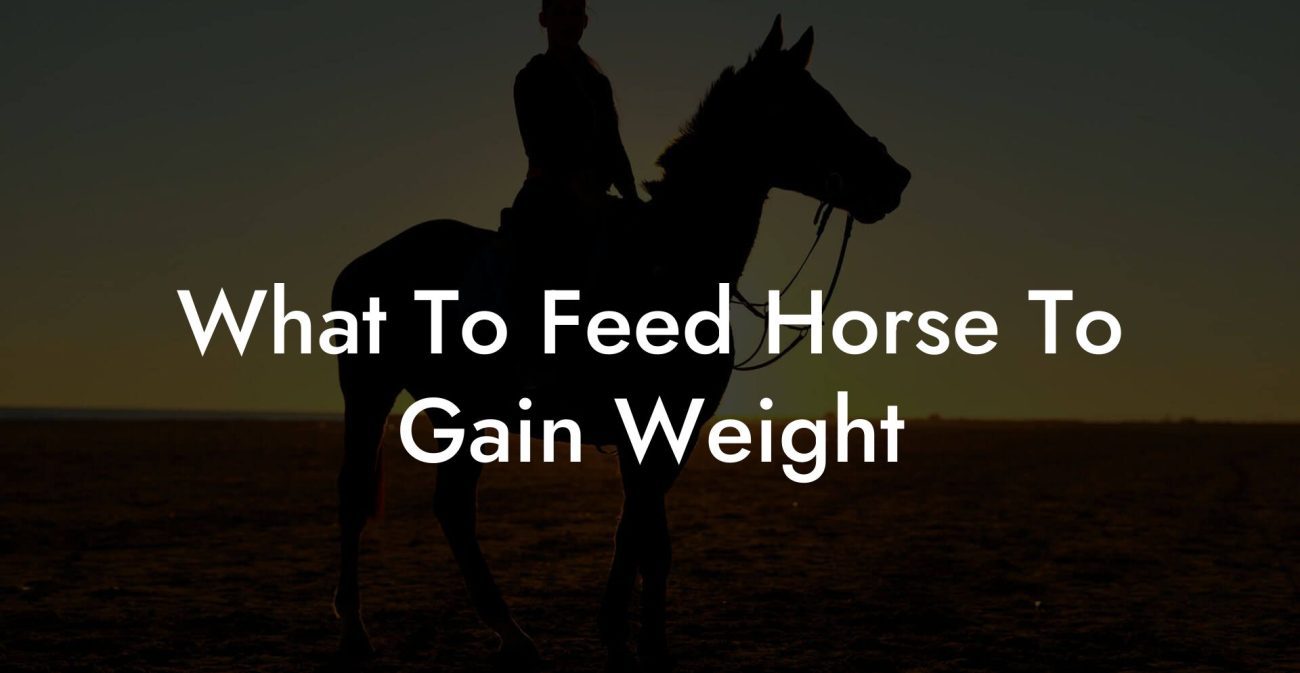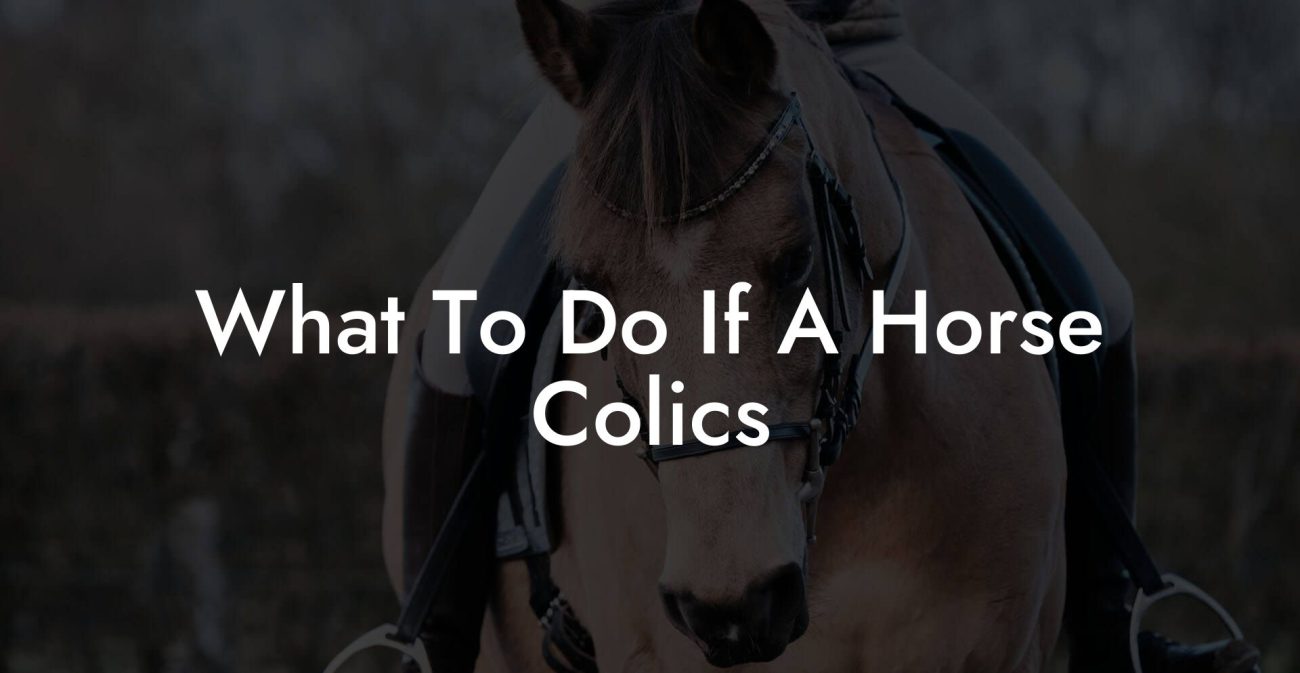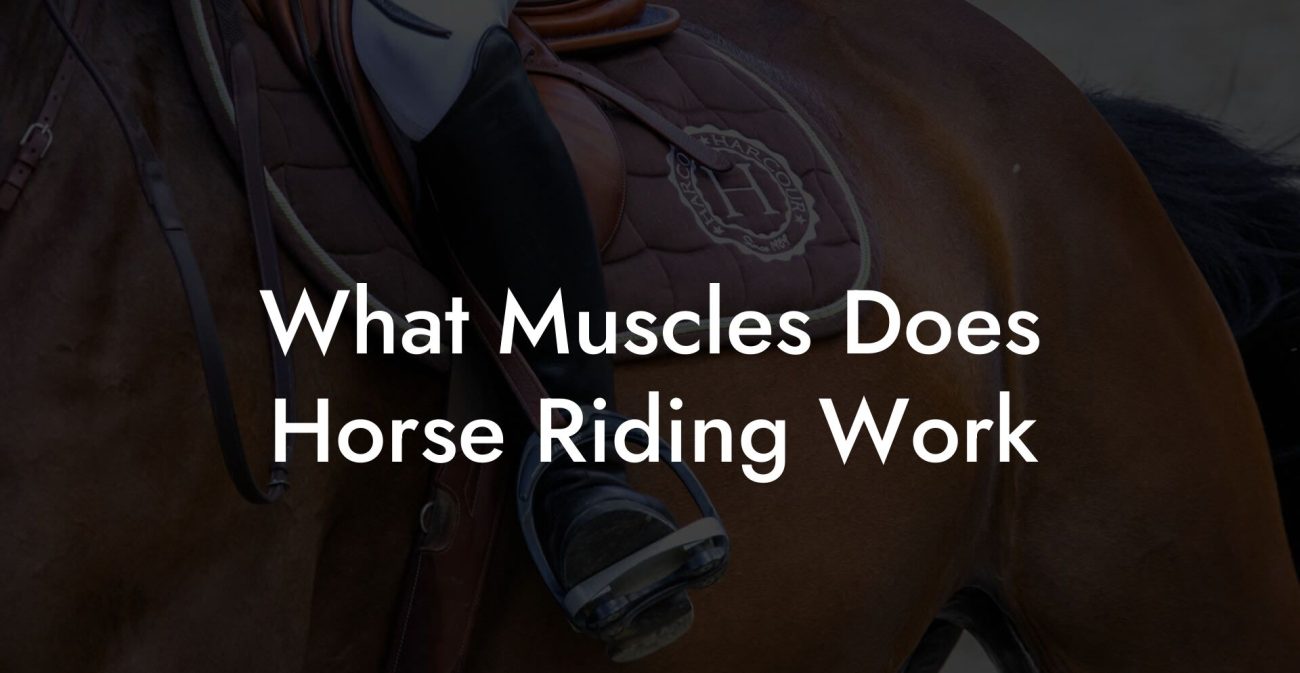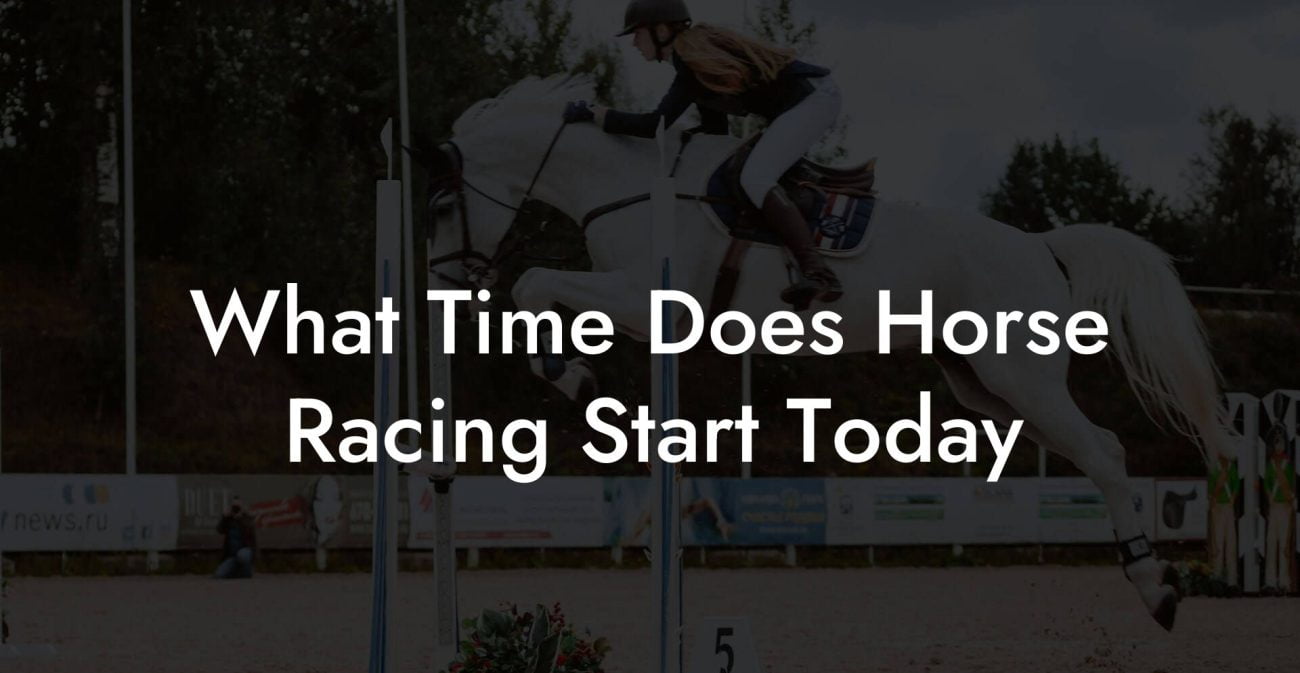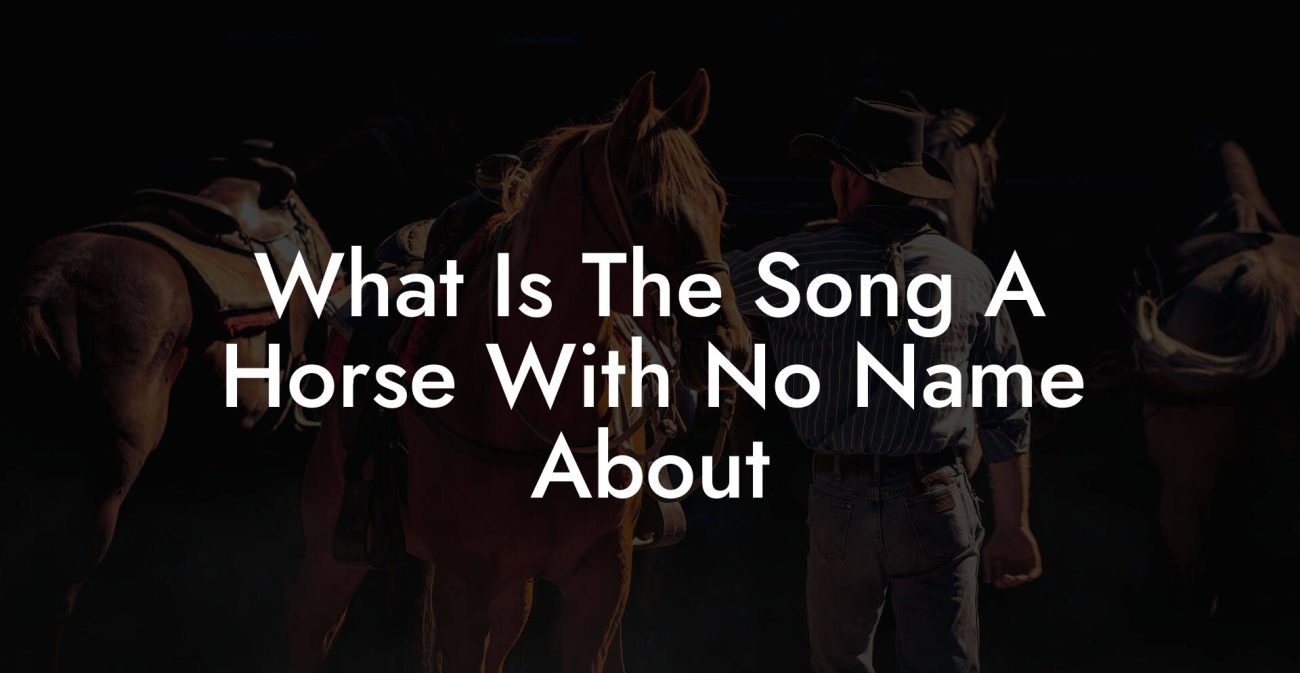Ever wondered if horse leasing could be your ticket to equine freedom without diving into the deep end of a purchase? Saddle up, because you're about to explore the ins and outs of monthly horse leases, a hassle-free, budget-friendly way to satisfy your inner cowboy or cowgirl while keeping your bank account smiling. Whether you're a Gen-Z adventurer or a millennial with a penchant for the pastoral life, this guide is your ultimate roadmap to understanding just "how much does it cost to lease a horse monthly" and what you'll need to know before you gallop off into the sunset.
Quick Links to Useful Sections
- What Is a Horse Lease and Why Consider It?
- Breaking Down the Price Tag: How Much Does It Cost to Lease a Horse Monthly?
- What’s Included in a Monthly Horse Lease?
- Factors Influencing the Cost of Leasing a Horse
- Lease Type: Full vs. Partial
- Geographic Location
- Facility Quality and Reputation
- Horse’s Experience and Specialization
- Additional Perks and Services
- Comparing Horse Leasing to Horse Ownership: Pros and Cons
- The Pros of Horse Leasing
- The Cons of Horse Leasing
- Understanding the Contract: What to Look for in a Lease Agreement
- Duration and Renewal Terms
- Responsibilities and Maintenance
- Riding Hours and Access
- Liability and Insurance
- Breaks and Termination Clauses
- Hidden Costs and Budgeting for Your Horse Lease
- The True Value of Leasing: More Than Just a Price Tag
- Practical Tips for First-Time Leasers
- Integrating Horse Leasing Into an Active, Modern Lifestyle
- Resources and Community Support: Your Next Steps
- Creating Your Personalized Horse Leasing Blueprint
- Step 1: Define Your Riding Goals
- Step 2: Establish Your Budget
- Step 3: Research and Compare Facilities
- Step 4: Ask the Right Questions
- Step 5: Make a Decision and Commit
- Real Stories from the Saddle: Case Studies in Horse Leasing
- Case Study 1: From City Life to Country Rides
- Case Study 2: Finding Balance and Boosting Confidence
- Case Study 3: Testing the Waters Before Full Ownership
- FAQs About Monthly Horse Leases
- Your Next Step: Embrace the Horse Leasing Lifestyle
What Is a Horse Lease and Why Consider It?
Leasing a horse is an innovative, budget-conscious alternative to full ownership. Not quite buying, not quite renting, it's like sharing a ride on a majestic steed without shouldering all the burdens and costs of complete ownership. For millennials juggling student loans, career transitions, and that ever-elusive work-life balance, and for Gen-Z thrill-seekers eager to try new hobbies without committing fully upfront, horse leasing has become an appealing option.
In essence, a horse lease involves paying a monthly fee to lease a horse, which often covers essentials like pasture fees, basic care, and sometimes even riding lessons. Of course, the specifics vary by lease type: from partial leases that offer some riding time to full leases where you gain nearly all the privileges of ownership. It's the equine equivalent of a "test drive" in the world of horse ownership.
Not only does leasing allow you to enjoy horseback riding and learn about equine care, but it also offers a taste of the lifestyle without the intense financial and time commitments that full ownership entails. It lets you dip your toes into the riding arena, gain hands-on experience, and decide if you want to level up into becoming a full-time horse owner later on. Plus, it’s a great way to share the ride with friends or join a community of like-minded equestrians.
Breaking Down the Price Tag: How Much Does It Cost to Lease a Horse Monthly?
Now, to the burning question: How much does it cost to lease a horse monthly? The answer is as varied as the colors in a field of wildflowers. Monthly lease payments can range from as low as $100 to upwards of $500 or more, depending on a variety of factors. Let’s break down the key cost components:
- Lease Type: Partial vs. full leases dictate the amount of riding time, responsibilities, and overall costs. Partial leases, which give limited riding access, are usually on the lower end of the price spectrum while full leases command higher fees due to increased responsibilities, benefits, and access.
- Facility Quality and Location: The amenities provided by the stable or equestrian center, along with geographic location, significantly impact your monthly fee. Premium facilities that offer indoor arenas, top-notch trainers, and luxurious pastures often charge more.
- Horse’s Profile: The horse’s age, training, breed, and sometimes even popularity can play a role. A well-trained, competitive horse might demand a higher lease payment than a beginner-friendly or unraced steed.
- Additional Services: Insurance, boarding fees, and sometimes even veterinary care costs may be wrapped into your monthly lease. Some leases include rider’s lessons or access to training sessions, which are factored into the price.
For example, if you're eyeing a partial lease where you get to ride a well-trained quarter horse at a high-end facility in a prime location, be prepared to invest around $300 to $500 per month. On the flip side, a more budget-friendly lease for a gentle, older horse at a stable with fewer bells and whistles might set you back closer to $100 to $200 per month.
What’s Included in a Monthly Horse Lease?
When budgeting for your horse lease, consider the components bundled into your monthly fee. While the specifics can vary from lease to lease, here’s a rundown of common inclusions:
- Basic Boarding and Pasture Fees: Your monthly fee typically covers the cost of boarding the horse in a safe, well-maintained facility with access to grazing areas or turnout time.
- Riding Time: Depending on your lease agreement, you might get several hours or even unlimited riding time each week. Partial leases often restrict riding days, whereas full leases offer more freedom.
- Routine Care: Basic feeding, cleaning, and sometimes minor grooming and hoof care might be included. However, more advanced services, such as specialized grooming, dental care, or additional exercise routines, may incur extra charges.
- Insurance: Some leases include rudimentary insurance coverage for the horse, offering a safety net for unforeseen injuries or incidents during riding sessions.
- Access to Amenities: At top-tier facilities, your lease might also cover use of indoor arenas, training equipment, and even access to coaching or lessons.
Knowing what’s included (and what isn’t) is crucial before you sign on the dotted line. Take the time to review lease contracts and inquire about any additional fees to avoid surprises down the road.
Factors Influencing the Cost of Leasing a Horse
Just like customizing your favorite burger with extra cheese or tweaking your streaming subscription, the cost of leasing a horse varies based on a multitude of factors. Here are the top influencers to consider:
Lease Type: Full vs. Partial
Your choice between a full lease and a partial lease significantly impacts your monthly cost. A full lease grants you near-total access to your leased horse, closely mirroring the experience of full ownership. In contrast, a partial lease offers a more limited arrangement, where the horse is shared among multiple riders.
Geographic Location
You guessed it: location matters! If you're in a metropolitan area or a region with a high cost of living, expect leasing rates to be on the steeper side. Conversely, rural areas or smaller towns might offer more affordable options.
Facility Quality and Reputation
The caliber of the facility, including amenities such as indoor arenas, training tracks, and comfortable boarding facilities, plays a significant role. High-end equestrian centers that cater to competitive riders or special events will price their leases accordingly.
Horse’s Experience and Specialization
A horse’s training, pedigree, and overall performance record can affect the cost. Horses that have a track record in competitions or come with advanced training carry a premium, while those ideal for beginners might be more budget-friendly.
Additional Perks and Services
Extra services, such as riding lessons, specialized training sessions, or access to exclusive events, can all add an extra layer of cost to the base lease fee. Be sure to consider whether these extras align with your riding goals and are worth the additional investment.
When evaluating lease options, keep these factors in mind and make a list of priorities. This will not only help you determine a fair monthly price but also ensure that your leasing experience matches your riding dreams.
Comparing Horse Leasing to Horse Ownership: Pros and Cons
If you're on the fence about diving into a horse lease, it might be helpful to compare it with full ownership. Both options have their perks and pitfalls, so here’s a snapshot to help guide your decision:
The Pros of Horse Leasing
- Lower Financial Commitment: Leasing is manageable for those who don't want to invest thousands of dollars upfront for full ownership.
- Flexible Commitment: A lease contract can be canceled or revised when your riding needs or financial situation changes.
- Shared Responsibilities: Routine care and maintenance are often handled by the facility, relieving you of some heavy responsibilities.
- Access to Premium Horses: Leasing can give you the opportunity to ride and learn from well-trained, competitive horses without owning them.
- Test the Waters: It’s an excellent way for beginners or casual riders to experience what horse care is all about before fully committing.
The Cons of Horse Leasing
- Limited Control: Since you don’t own the horse, you have to adhere to the lease agreement rules and sometimes share riding time.
- Additional Costs: While the base lease might cover essentials, things like specialized care, extra riding lessons, or personal equipment upgrades might not be included.
- Emotional Attachment: Some equestrians feel that sharing a horse makes it harder to form a deep personal bond.
- Scheduling Challenges: Coordinating riding sessions with other lessees might require extra planning, especially during peak times.
In the end, whether you choose leasing or ownership depends on your personal circumstances, riding goals, and financial situation. Leasing can be an incredible stepping stone to full ownership, or it might be the perfect long-term solution if you prefer a more flexible, low-commitment lifestyle.
Understanding the Contract: What to Look for in a Lease Agreement
Before signing on the dotted line, it’s essential to dive into the details of a lease agreement. Think of it as the fine print of your next great adventure, knowing the terms can save you from unexpected twists in your equine journey. Here’s a checklist of what you need to look for:
Duration and Renewal Terms
Understand how long the lease lasts. Some agreements are as short as a season, while others stretch out to a full year or beyond. Check the renewal policy and any potential price adjustments when it’s time to extend your lease.
Responsibilities and Maintenance
Clarify who handles routine care, what services are included, and what you’re responsible for. This might include feeding, grooming, cleaning stalls, or even supplementing specialized care.
Riding Hours and Access
Make sure the contract spells out exactly how often and when you can ride. Some leases come with fixed riding hours, while others offer more flexibility.
Liability and Insurance
Check if liability insurance and accident coverage are included in your lease. Understand the extent of coverage in case of injuries or damages during riding sessions.
Breaks and Termination Clauses
Read through the termination clauses carefully. Know what happens if you or the facility decide to end the lease early and what any penalties might be for early termination.
By getting a handle on these details, you ensure that your leasing experience is as smooth and stress-free as an open ride on a clear day.
Hidden Costs and Budgeting for Your Horse Lease
Even though a monthly horse lease has a base fee, there may be extras that add up over time. Just like how your favorite subscription might have hidden fees, it’s crucial to prepare for unforeseen expenses. Here are some potential extras to keep in mind:
- Equipment and Tack: Not all leases include riding gear. Helmets, boots, and saddles might need to be purchased or rented separately.
- Additional Training Sessions: If you’re looking to hone your riding skills or compete, you might invest extra in riding lessons or specialized training.
- Veterinary and Farrier Services: While routine care might be covered, emergency veterinary care and hoof maintenance could sometimes fall under your responsibility.
- Transportation Costs: Getting to and from the facility safely, especially in rural areas, might require extra investment in reliable transportation.
- Insurance Upgrades: If you want additional coverage beyond the basics, you might opt for extra insurance that protects both you and the horse more thoroughly.
To avoid being caught off-guard, create a comprehensive budget that includes the base lease fee and a cushion for these extra costs. This thoughtful approach ensures your riding passion remains fun and sustainable without any unwanted financial surprises.
The True Value of Leasing: More Than Just a Price Tag
When you think about leasing a horse, it’s easy to get caught up in numbers. However, the true value goes beyond the monthly fee, it’s about the experience, the learning, and the community. Leasing offers you:
- Learning Curve and Skill-Building: Get hands-on experience with horse handling, grooming, and riding. This is an invaluable opportunity to learn from professionals and immerse yourself in an environment that fosters growth.
- Community and Support: Many equestrian centers cultivate a vibrant community. You’ll have the chance to meet fellow horse enthusiasts, share experiences, attend group rides, and even make lifelong friends.
- Flexibility: If your riding needs change, as they often do with evolving lifestyles, the lease can be adjusted or even terminated without the long-term commitment that full ownership entails.
- Quality Time: In today’s digital age, spending time with a living, breathing creature in a tranquil outdoor setting is a refreshing break from screens and endless notifications.
When you factor in the joy of connecting with a horse, the thrill of learning a new skill, and the supportive community around you, the price of leasing a horse becomes not just a cost, but an investment in quality experiences and personal growth.
Practical Tips for First-Time Leasers
If you're a first-timer in the horse leasing world, diving in might feel a bit intimidating. Here are some practical tips to help you make the most of your leasing adventure:
- Visit Multiple Facilities: Before settling on a lease, tour different stables and equestrian centers to find one that fits your comfort level, budget, and style.
- Ask for a Trial Period: Some facilities offer introductory programs or trial leases, this can be a great way to test the waters without a long-term commitment.
- Educate Yourself: Take the time to learn the basics of horse behavior, proper riding techniques, and essential care routines. Many centers offer workshops or beginner clinics.
- Talk to Other Lessees: Hear firsthand accounts from those who’ve been there. Their experiences and tips can provide valuable insights that help you navigate the leasing process.
- Set Realistic Expectations: Understand your riding level and the learning curve involved. Don’t hesitate to ask for help or extra guidance until you feel confident.
With these strategies, your transition into the world of horse leasing will be smoother, letting you focus on enjoying every stride along your equestrian journey.
Integrating Horse Leasing Into an Active, Modern Lifestyle
In our fast-paced, gadget-driven era, finding time for hobbies like horse riding might seem like a luxury, but it doesn’t have to be. Leasing a horse allows you to balance your busy schedule with an enriching, hands-on experience. Here’s how to blend the equestrian world into your modern lifestyle:
- Schedule Smartly: Use digital calendars and reminder apps to book your riding sessions around work or study commitments. Many facilities offer flexible hours, including weekends and early mornings.
- Join Online Communities: Social media channels, dedicated forums, and equestrian Facebook groups are great places to share tips, ask questions, and even arrange group rides with fellow enthusiasts.
- Set Personal Goals: Whether it’s mastering a new riding technique, participating in a local ride, or simply enjoying more quality time outdoors, having clear goals can keep you motivated.
- Document Your Journey: Start an Instagram or TikTok account to chronicle your adventures, learnings, and the quirky moments along the way. It’s a fun way to track progress and inspire others.
Merging your digital life with the timeless art of riding can create a unique narrative, one where you balance work, play, and passion with finesse.
Resources and Community Support: Your Next Steps
Ready to take the next leap into horse leasing? The journey is easier when you’re adequately supported. Here are some resources and community touchpoints to help you get started:
- Local Equestrian Centers: Search for reputable stables in your area that offer leasing programs tailored to your needs. Visiting these centers can provide firsthand insights into their facilities and program details.
- Equestrian Clubs and Forums: Join clubs or online groups where you can interact with seasoned riders. Websites like The Horse Forum and Equestrian Interest Group on Facebook are great platforms to exchange ideas.
- Riding Clinics and Workshops: Many equestrian centers host beginner clinics, advanced riding workshops, and horse care seminars. Participating in these events can sharpen your skills and expand your network.
- Social Media Influencers: Follow well-known equine enthusiasts on platforms like Instagram, TikTok, and YouTube. Their tips, reviews, and behind-the-scenes content can inspire your leasing journey.
- Financial and Insurance Advisors: Consult with professionals who understand equestrian investments. They can help you navigate budgeting, insurance specifics, and any financial reservations you may have.
By tapping into these communities and resources, you’ll not only ease your transition into horse leasing but also build lasting relationships with people who share your passion for equine adventures.
Creating Your Personalized Horse Leasing Blueprint
Embarking on a horse leasing journey is like designing your own equestrian adventure, it’s all about crafting a plan that fits your unique lifestyle, goals, and financial reality. Here’s how to build a personalized blueprint:
Step 1: Define Your Riding Goals
Are you looking to learn the basics, improve your riding technique, or even train for competitions? Understanding your goals will guide you in selecting the right lease type and the level of training facilities you need.
Step 2: Establish Your Budget
Calculate a realistic monthly budget that factors in the base lease fee along with potential hidden costs like equipment, extra training sessions, and transport. A clear budget helps narrow down your options.
Step 3: Research and Compare Facilities
Create a list of potential equestrian centers; visit their websites, read reviews, and even schedule tours. Comparing facilities based on amenities, quality care, and lease terms can save you from future headaches.
Step 4: Ask the Right Questions
When you meet with lease coordinators or trainers, inquire about all terms of the agreement, extra costs, and the support available for beginners. This proactive approach ensures transparency and builds trust.
Step 5: Make a Decision and Commit
Once you’ve gathered all your research, trust your gut. If everything aligns with your needs and budget, take the plunge and sign that lease. Remember, your journey can always adapt along the way.
A personalized plan is a living document. Continue reviewing your riding goals, budget, and schedule. Adapt your plan as you grow as a rider and as your lifestyle changes.
Real Stories from the Saddle: Case Studies in Horse Leasing
Sometimes the best way to digest information is through real-life experiences. Here are a few stories from riders who transformed their lives by leasing a horse:
Case Study 1: From City Life to Country Rides
Meet Alex, a busy millennial programmer with a hectic city life. Craving a break from the digital grind, Alex decided to lease a horse from a local equestrian center that offered partial leases. With just $150 a month, Alex was able to carve out precious hours each week for rides. Not only did this provide a much-needed escape, but it also ignited a passion for equine care and riding, sparking a transformation in stress management and personal fulfillment.
Case Study 2: Finding Balance and Boosting Confidence
Then there’s Jamie, a Gen-Z college student juggling studies and a budding interest in competitive riding. Jamie opted for a full lease, which provided near-complete access to a well-trained gelding at a highly rated facility. The structured riding sessions, combined with expert coaching, helped Jamie improve riding skills dramatically, gain self-confidence, and even build a supportive network of fellow riders.
Case Study 3: Testing the Waters Before Full Ownership
Finally, consider Taylor, who was on the fence about the long-term commitment of horse ownership. Taylor decided to lease a horse as a trial, taking advantage of the partial lease option to see if the equestrian lifestyle was for them. After several months filled with joyful rides and learning new skills, Taylor felt empowered to eventually transition into full ownership, but only after ensuring that leasing was the right fit.
These stories highlight how a thoughtful leasing arrangement can serve as a springboard into the wonderful world of horses, providing flexibility, learning opportunities, and personal growth without the full commitment of ownership.
FAQs About Monthly Horse Leases
We know you might still have questions swirling in your head about leasing a horse. Here are some of the most frequently asked questions to help clear things up:
1. How much does it typically cost to lease a horse monthly?
Monthly lease costs can range anywhere from $100 to $500 or more depending on the lease type, facility quality, geographic location, and included services.
2. What are the differences between a full lease and a partial lease?
A full lease usually gives you nearly complete access and responsibility of the leased horse, similar to ownership, whereas a partial lease means the horse is often shared among multiple riders, limiting your riding time and responsibilities.
3. Is insurance typically included in the lease fee?
Some leases include basic liability insurance for the horse, but it’s crucial to check the contract for details. Enhanced or additional insurance might require extra fees.
4. What additional costs should I be prepared for?
Aside from the base lease fee, you might incur extra costs for equipment, additional training, specialized care, and transport. Always review lease agreements for hidden fees.
5. Can I cancel my lease if I decide it isn’t for me?
Lease cancellation policies vary. It’s important to understand the termination clause in your contract before signing up, ensuring you know what penalties or notice periods apply.
6. How do I choose the right facility for my needs?
Research multiple facilities, visit them in person if possible, compare amenities, and read reviews from other lessees. Asking plenty of questions will help you find a facility that aligns with your goals.
7. What resources are available for first-time lessees?
Numerous equestrian centers, online forums, and social media groups offer insights and support for beginners. Additionally, talking directly to existing lessees can provide valuable perspective.
Your Next Step: Embrace the Horse Leasing Lifestyle
Stepping into the world of horse leasing is like opening the door to a whole new lifestyle, one that combines adventure, learning, and community. With a clear understanding of costs, lease types, and essential contract details, you can confidently decide if leasing is the right equine journey for you.
Remember, this is more than just a monthly fee, it’s an investment in experiences, personal growth, and unforgettable moments on horseback. So why not take that leap and let the ride enrich your life in ways you never imagined?
Whether you're embarking on this journey to break free from the mundane, to learn new skills, or simply to enjoy nature and build lasting connections, horse leasing might just be the refreshing change you've been looking for. Embrace the thrill, appreciate the freedom, and join a community that shares your passion for the equine lifestyle.
Your ride awaits, so saddle up, stay curious, and let your journey into the world of horse leasing transform not only how you spend your time but also how you experience life.

